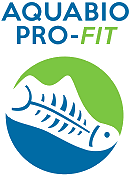Bioeconomy is another idea that formally came to light for conversation towards the start of the 21st century. As stated by the European Commission, "The bioeconomy comprises those parts of the economy that use renewable biological resources from land and sea such as crops, forests, fish, animals and microorganisms to produce food, materials, and energy." On the other hand, according to the Innovation Policy Platform, the improvement of bioeconomy and biotechnologies can prompt better stockpile and environmental sustainability of food, feed and fiber production, improving the water quality, provision of renewable energy, improving the wellbeing of animals and people, and helping in biodiversity protection by identifying invasive species. OECD (Organisation for Economic Cooperation and Development) defines the bioeconomy as "the set of economic activities relating to the invention, development, production and use of biological products and processes".
The general idea of bioeconomy is to develop energy, food and raw material supplies from renewable sources, moving away from our current dependency on fossil fuels and their derivatives. Bioeconomy can support sustainable development by improving the environmental efficiency of primary production and industrial processing and by helping to repair degraded oil and water.
Biobased economy is seen by numerous individuals as a future basis for a sustainable society and economy. New creative tools, associations, organisations and approaches are being created to help the biobased economy meaning to replace fossil based fuels and materials with sustainable biobased materials. Biomass, as a sustainable and bottomless resource, has many immediate and aberrant applications for food, feed, powers, fertilisers, chemical compounds and materials. The types of resources strongly differ per region. In the Mediterranean region, a lot of olive and vine biomass is accessible, in Scandinavia it is principally woods related biomass, while in numerous different regions there is a lot of horticultural biomass. However, biomass utilised for the biobased economy ought not compete with food production. In this manner, particularly biomass side streams are of great interest for the biobased economy. Agricultural and forestry service biomass side streams appear as residual stalks, straw, leaves, roots, desk, nut or seed shells, animal husbandry waste, forest harvest residues, saw mill deposits, and so forth. They are broadly accessible, sustainable, and cost effective. Their utilisation is carbon neutral, so such biomass can displace non-renewable energy sources, can assist with lowering GHG emissions while closing the carbon cycle and it very well may be changed over into a wide range of bioenergy and biomaterial products. When developing new paths for valorisation of biomass, it is essential to consider measurements and standards as far as "individuals, planet and profit" so as to make the change towards a sustainable future.
Innovations in bio-sourced products, bioprocesses and other side-streams offer tremendous potential by encouraging the adoption of clean technologies that will be used to design and manufacture innovative products in new and different ways.






